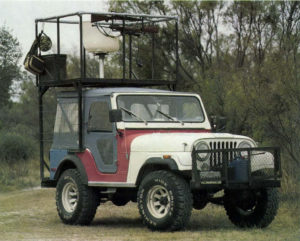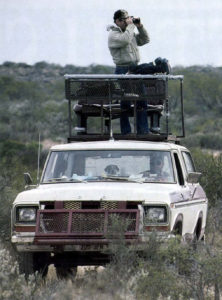Dolan Creek Ranches by Chuck Wechsler
May 25, 2017



 SCA Articles
SCA Articles
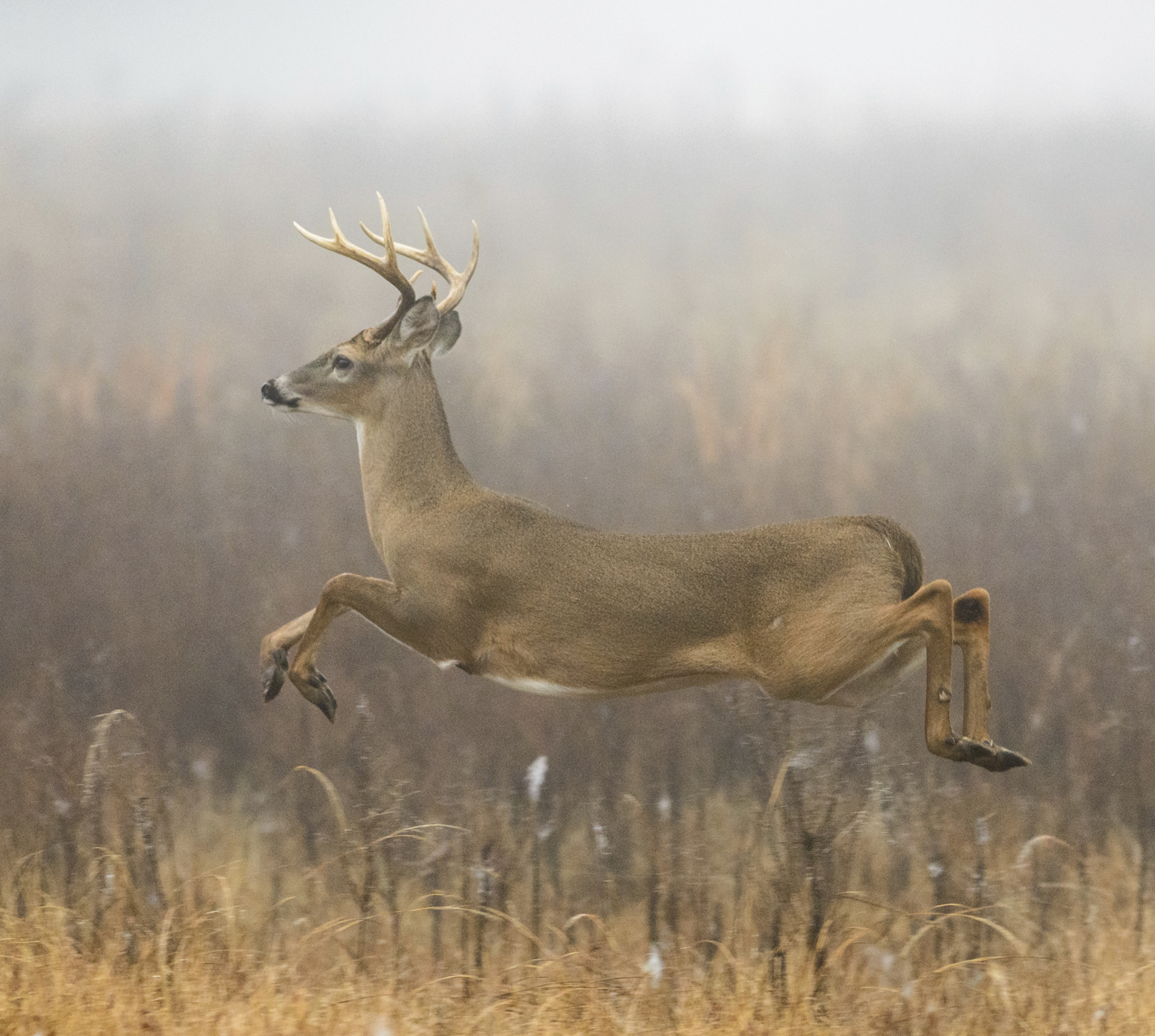
Dolan Creek Ranches
In the rugged brush country of South Texas, you’re almost guaranteed a number of chances at trophy whitetails. And you just might need everyone of them.
By Chuck Wechsler
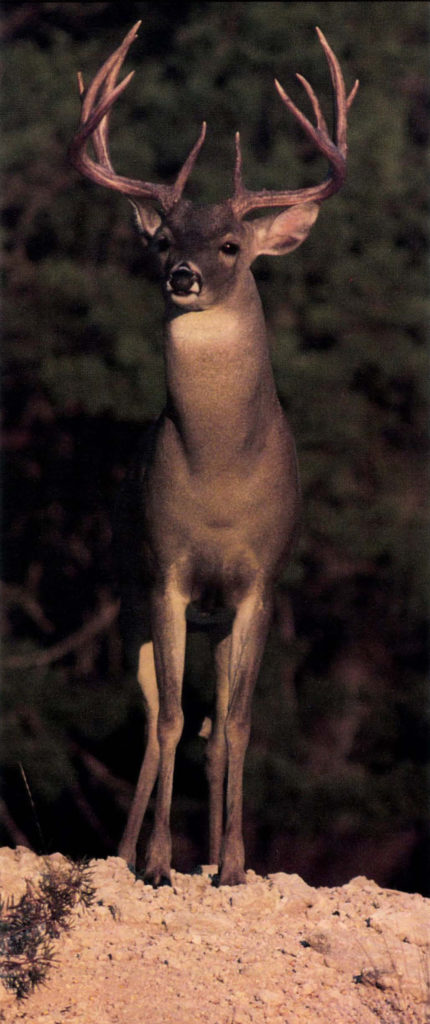 John Finegan was not a happy cowboy. The big rancher stared out the window of his battered Ford Bronco, his massive shoulders slumped over the steering wheel, his mouth a taut line of frustration. Even little Rascal, curled into a black-and-white ball on the seat next to John, seemed put off by the precedings.
John Finegan was not a happy cowboy. The big rancher stared out the window of his battered Ford Bronco, his massive shoulders slumped over the steering wheel, his mouth a taut line of frustration. Even little Rascal, curled into a black-and-white ball on the seat next to John, seemed put off by the precedings.
The cause of Finegan’s concern was embarrassingly obvious: my shooting. I had just blown my third chance at yet another trophy whitetail and now, with a brilliant orange sun slipping toward the horizon, my hopes for a big buck were fading fast. And what that meant to John Finegan was a magazine story in which the author went home without a deer (ugh!!!), something virtually unheard of in South Texas where whitetails are as common as cactus.
Finegan and Jon Ducharme, co-owners of Dolan Creek Ranches, had invited myself along with Wade Culler and Duncan Grant of our magazine staff and Minnesota wildlife artist Ron Van Gilder to sample a brand of hunting unique to the South Texas brush country.
“You’ll be hunting safari-style,” John had explained weeks prior to our December hunt, “from vehicles, which means plenty of opportunity to look over bucks with 8 to 12 antler points and 18- to 20-inch spreads.” An invitation like that was too good to pass up, though admittedly, we all felt somewhat uncomfortable about hunting and shooting deer from vehicles.
Any misgivings we had about safari-style hunting were gone in our first hour on the 16,000-acre Herbst Ranch just east of Del Rio. From the comfortable shooting cage atop Finegan’s Bronco, we were able to see well above the endless sea of mesquite and blackbrush. On foot, spotting whitetails in the head-high tangle would have been next to impossible. But just being able to see the deer was only a small part of challenge.
Throughout the morning John followed existing dirt roads or slipped cross-country, seldom driving much faster than normal walking speed. By moving slowly and whenever possible into the wind, we flushed dozens of does and young bucks at close range. But not the old-timers. Once they detected our vehicle they were off and running, dodging and twisting and turning through the dense brush until they had logged a safe distance between them and us. And therein lied the challenge.
Safari-style hunting, we soon learned, demands quick, accurate shooting, usually at long distances and all too often at running targets.
Shortly before noon we glassed an 8-point buck with amorous intentions toward a doe. So intent was the buck that he failed to notice our vehicle slip closer and closer. The instant John killed the engine I put my crosshairs on the buck, which Ron and I estimated to be 300 yards away. Knowing that my Ruger 7 x 57 was range-sighted at 200 yards, I held just over his back. At the shot the buck bounded away, showing no signs of being hit.
“How far do you think he was?”
“Bout 160, 170 yards,” responded Finegan, adding: “Our brush country deer have big racks, but small bodies. A five- or six-year-old buck weighs only 130 to 140 pounds, which compares to a northern whitetail’s 200 or better. Because of his small size, you simply figured the deer to be a whole lot farther away than he really was. It’s a common first mistake by our hunters.”
That first day was memorable, obviously not because of my shooting, but for the tremendous number of deer that we observed. Ron and I counted at least 150 whitetails, including two bucks with tall racks and good spreads, but with greyhound legs that carried them out of sight in seconds. Wade and Duncan, guided by Charley Rodgers, a government pilot who spends most of his time patrolling the Mexican border for illegal aliens and drug smugglers, had seen a similar number of deer, including a beautiful II-pointer that never made it to cover. Wade had dropped the buck with one shot from his .270 Ruger at an amazing 400 yards.
Back in Del Rio that evening, John Finegan traced the evolution of Dolan Creek Ranches, which since 1971, has speCialized in safari-style hunts. John and his wife Betty formed the company over 20 years ago along with 0.0. and Brancie Finegan on land settled by John’s grandfather in 1883. From that time forward, hunting on their land has been strictly controlled. In 1980, after becoming too successful for their size and being forced to turn away hunters, the Finegans decided to open a Rio Grande Division operating out of Del Rio. They obtained exclusive hunting rights on several other ranches, enabling them to offer excellent hunting, not only for whitetails, but also turkey and quail. Then in 1983 Jon and Liz Ducharme purchased one-half interest in the Rio Grande Divison, and together with the Finegans, formed Dolan Creek Ranches. Currently, they offer hunting for whitetails, turkey, scaled and bobwhite quail, and various exotics on 60,000 acres of private lands.
“All of the ranches we hunt are managed for quality whitetail hunting,” Finegan explained. “These ranches have excellent buck-doe ratios as well as healthy populations of whitetails. The Herbst Ranch, for example, has a 1 to 2.21 buck-to-doe ratio.
“Nearly all of the bucks we take are in excess of 4 1/ 2 years, a goal that most hunting operations only dream of but never attain. Our hunter success rate is never below 85 percent; normally we are much higher and have had many 100 percent years.”
Day two found us in a more picturesque setting: the 16,000-acre Allen Ranch along sprawling Lake Amis tad, the third largest reservoir in the world. Here the brushy terrain is slashed by deep canyons and gorges with dense thickets of blackbrush punctuated by spiny octillo and prickly pear.
After scanning nearly a dozen bucks within the first three hours, Ron fired at a sinewy 8-pointer just as it reached a brushy ridgetop about 150 yards away. Obviously hit, the buck limped over the ridge and disappeared from sight. Now it was Rascal’s turn. John’s loyal fox terrier quickly picked up the trail, leading Ron to a tall clump of brush where the buck stood, head drooping. Ron fired again, ending its misery.
Close examination of our first Texas whitetail revealed a surprisingly dainty animal, with slender legs and hooves, and a lean, grayish-black body with distinctive white patches on its nose and throat. John estimated its weight at 100 pounds, normal for a 2 1/2 year old buck.
After field-dressing the deer, John drove us along a road overlooking a brush-choked ravine where he stopped, then emerged with a long leather sling and began lobbing rocks into different parts of the cover. Twirling the sling rapidly, he launched one rock toward a distant copse of trees. But this time it flew straight back over his shoulder in the opposite direction of his aim.
Noticing the startled look on our faces, John quickly blamed the errant throw on his choice of ammunition. “You need smooth, round or oblong rocks. Jagged ones sometimes catch in the cradle and fly off in different directions.”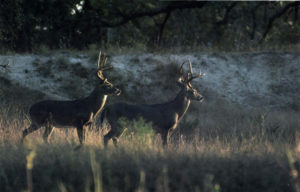
Despite his explanation, from that point on we kept one eye peeled on the cover and the other on John whenever he brought out his sling.
Less than a mile farther down the road we parked along a periodic river where John lobbed a big rock that cracked loudly against the side of an ancient oak. Spooked by the sound, a 9-point buck and a doe bolted from the thicket and began churning across the sandy riverbed.
My first shot, at 75 yards, sailed just over the buck’s head. My second, at perhaps twice the distance, kicked up sand behind his rump. My third bullet was little more than a farewell salute.
Finegan, who after two decades of safari-style hunting has mastered the fine art of shooting running whitetails, explained: “Hitting a running deer is no different than shooting a dove with a shotgun. Swing with ’em and pull the trigger as you swing. You can’t point and shoot, or stop your swing. That way, you’ll miss everytime.”
Which I had done, in grand style.
Our third and last day began like the first: at dawn, perched atop the Bronco, riding over the brushcovered hills on the Herbst Ranch. Only this time, deer seemed everywhere-resting behind clumps of cactus, browsing in brushy ravines, sauntering across open meadows in plain sight. Along a dusty road that paralleled a dry streambed, we saw a small herd of does led by a buck with an enormous, basket-like rack. The deer were about 250 yards ahead, though only a dozen feet off the road. But even before I could raise my gun, the buck noticed our vehicle and broke into a hard run that carried him to the opposite flank of the river over a mile away.
“That was a Boone & Crocket buck! The biggest set of antlers I’ve ever seen,” Ron exclaimed.
I agreed, though seeing the magnificent animal did little to erase a nagging doubt that I might not get another chance at a trophy whitetail.
That afternoon we turned off a dirt road to drive cross-country. Edging to the top of a small knoll, we studied a tree-lined ravine about 100 yards distant. Ron spotted a doe, which started to trot away followed by a buck with a high crown of antlers. QUickly I aligned my cross hairs on a small clearing where he would emerge, then fired the instant he appeared. The buck and doe pivoted sharply and disappeared into a small grove of trees. Anxious seconds passed before they reappeared, sneaking up the far hillside. I squeezed off another round, missing about a foot to the left. The buck trotted another 100 yards, then unbelievably, turned to look back at what was causing all the ruckus. I fired again, and this time he leaped straight up, as if hit.
“You hit ’em. Nice shot,” said Ron, slapping me on the shoulder.
”I’m not so sure. He was a long way off and I may have hit just under him.”
Which proved to be the case. After an hour of searching we were unable to find any trace of blood. Not even Rascal could pick up the buck’s scent on the rock-strewn ground.
By then it was 5:00, less than an hour before sunset. After climbing back into the shooting cage, I found myself staring into the side mirror at Finegan’s brooding face. I felt terrible, not so much for myself because there would always be other hunts for other deer, but for poor John who had worked so hard to get me a good buck and his company a success story.
And then it happened-suddenly, unexpectedly, gloriously. Less than a mile from the last gate, with a brilliant Texas sun poised on the horizon, we saw him standing a hundred yards from the road, frozen in the gathering twilight, his nine antler points glinting in the amber light. One shot and it was over. John Finegan had his happy ending and I had my biggest set of whitetail antlers in 30 years of hunting.

